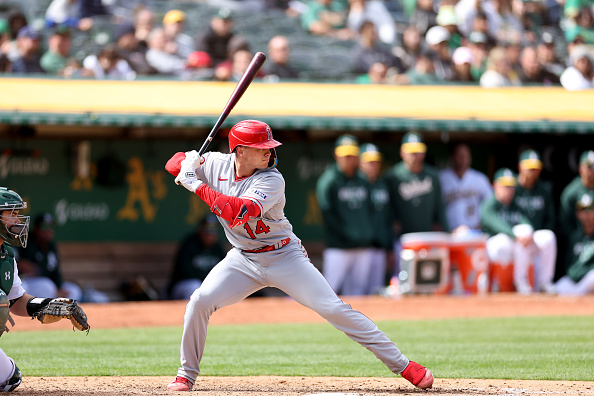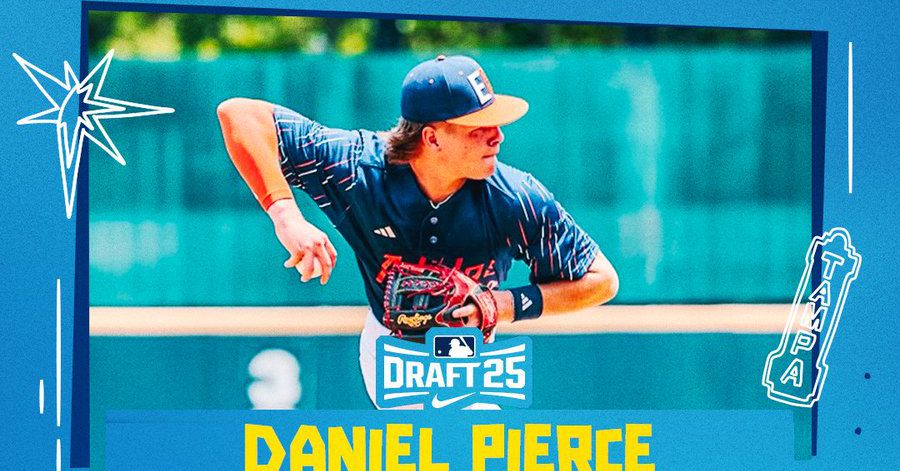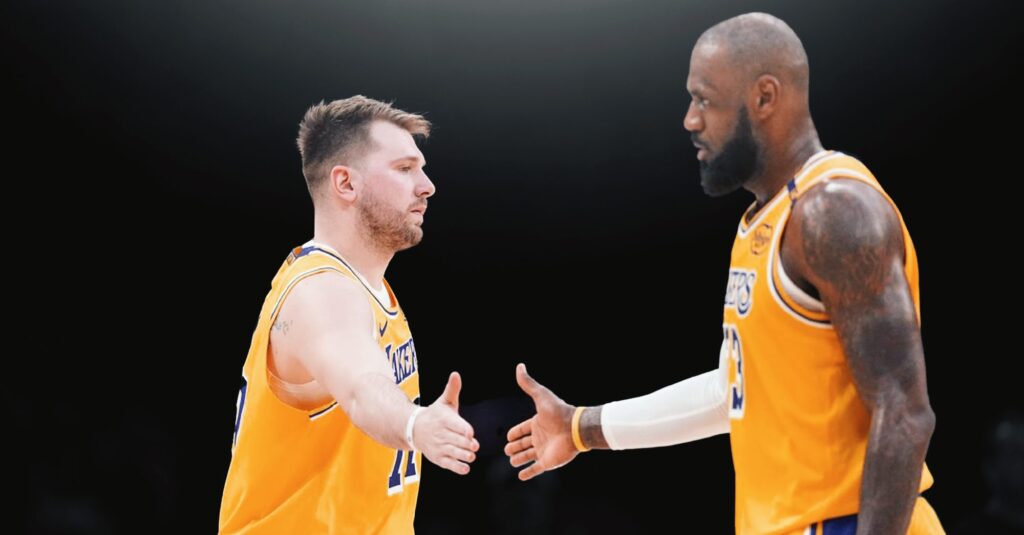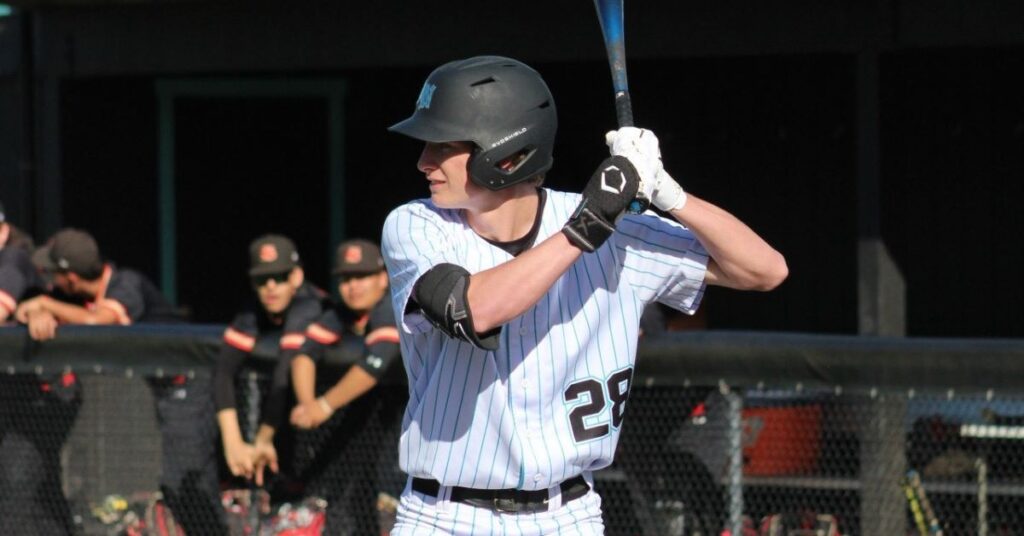As the All-Star break arrives and the fantasy season hits its midway point, or was that a few weeks back at 81 games? Regardless, it’s tempting to fall in love with the players who drove first half success. Whether via an unexpected batting average, a flurry of home runs, or an unexpected speed spike, it can make any manager feel like they’ve struck gold. But not all that glitter is built to last. Now is the time for sharp managers to take inventory not just of what’s working, but if it has staying power. For every first half hero helping to keep your squad afloat, there might be regression lurking beneath the surface for concern. These are the players that represent an opportunity to deal from a position of strength before the second half winds blow in a different direction. This week, our hitter profiles focus on some sell-high candidates where winning managers should be looking to deal from a position of strength.
Logan O’Hoppe
Logan O’Hoppe has delivered exactly what fantasy managers dream of from the catcher position with his power. His 17 home runs rank among the top catchers in baseball, and he’s chipped in with 27 runs and 37 RBI along the way, which are highly useful counting stats for a notoriously thin position. But before you get too comfortable penciling him into your lineup the rest of the way, it’s worth taking a closer look at what’s actually driving his value and what might be hiding in plain sight. Despite the homers, O’Hoppe is hitting just .232, and his plate discipline is downright dreadful. He currently holds a 33.2% strikeout rate paired with a 4.5% walk rate, which gives him the worst BB/K ratio in the league. That’s not just a red flag; it is a glaring concern for fantasy managers. Hitters with similar contact profiles typically find themselves benched or batting last, not propped up as middle-of-the-order producers. His 91 wRC+ show he’s actually been a below average hitter. He’s not helping you in batting average or OBP, and with that kind of swing-and-miss in his game, there’s real risk of a cold spell for a long period of time.
He’s the Angels’ primary catcher and one of the few long-term building blocks on the roster. But fantasy isn’t about job security, it’s about maximizing value the rest of the season. Right now, O’Hoppe’s value is at a high point thanks to his home run totals. If that power pace slows even slightly, you’re left with a high-strikeout, low-average bat offering minimal upside elsewhere. It’s the perfect opportunity to shop him around and see if another manager will pay full value for you to offload the risk.
Christian Yelich
Christian Yelich has been one of the biggest surprises of the first half, delivering a stat line that brings back memories of his 2019 MVP-caliber form. That line includes 19 homers, 65 RBI, 14 steals, and a .261 average. He’s on pace for his highest home run total since that 6.6 WAR season, once again riding a 30% HR/FB rate, which is a figure he hasn’t approached in years. But that’s the issue. This version of Yelich, the one flashing 30-homer upside and five-category production, simply hasn’t existed since the end of the 2010s. Expecting him to keep this up is a dangerous game. Dig deeper, and the cracks start to show. Yelich is running with the weakest Statcast profile of his career, marked by declining exit velocity and middling quality-of-contact metrics.
His expected batting average is just .246, a decent step below what he’s actually hitting, indicating that he’s overachieving based on his batted-ball profile. The power production in particular feels like smoke and mirrors, a throwback stretch that doesn’t align with who he’s been over the last five seasons. Because the surface numbers look so strong, he can still be sold as a legitimate five-tool player. But a few of those tools, power, and batting average, are skating on thin ice. His name value and fantasy production might never be higher this year, making now the perfect window to sell before regression, and risk of injury, which is ever present with Yelich, start to chip away at his results.
Cal Raleigh
This will seem like blasphemy, and this opinion is solely reserved for single season redraft leagues. However, Cal Raleigh is the best trade chip for contending teams at the midway point of the season. In addition, the catcher position may be deeper in replacement talent than many years before. The likes of Agustin Ramirez and Drake Baldwin have burst onto the scene, while stalwarts such as Adley Rutschman have been dropped in some leagues due to roster crunch and injury. This is not to disparage the absolutely insane season that Cal is having while batting .264 with 38 homers, 65 runs, and 81 RBI, which is good for a 181 wRC+ and the statistics which appear to represent a full season already in grand fashion.
Focusing on Cal and some of the signs that point to regression is splitting hairs, but sometimes we have to make the hard calls. Cal has the third highest gap between actual slugging and expected slugging according to Baseball Savant. His expected batting average of .244 compared to his .261 with a career .221 rate. Most importantly for the Big Dumper, he has an expected home run total of 30 compared to 38. This is mainly driven by an unsustainable 27.7% HR/FB ratio. This really isn’t a hot take or deep analysis. When any player is on an extended hot streak that is beyond their expected results, it is time to see if the trade market is just as hot. At this point, if you can pull in a first round talent such as Kyle Tucker or Bobby Witt Jr. then this is the time to pounce and fill that lineup hole.






